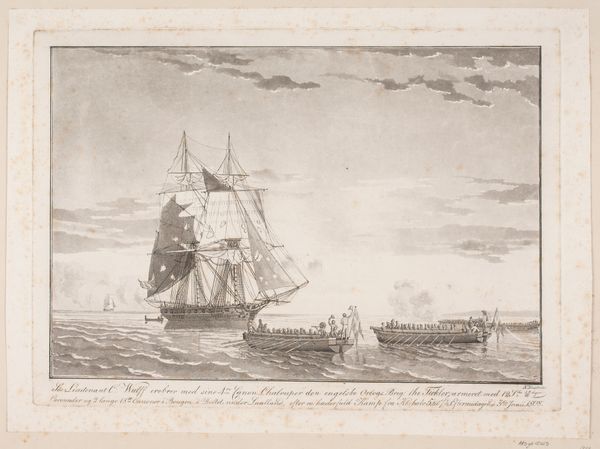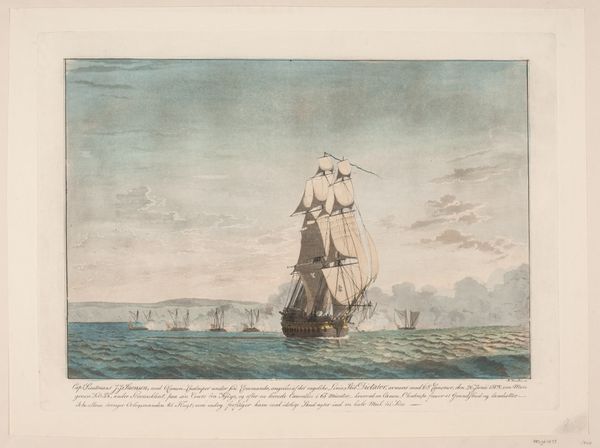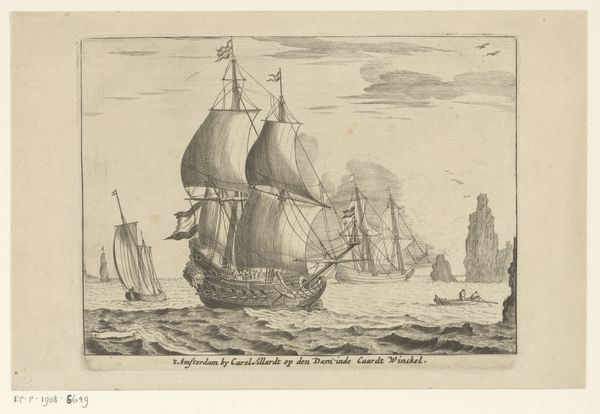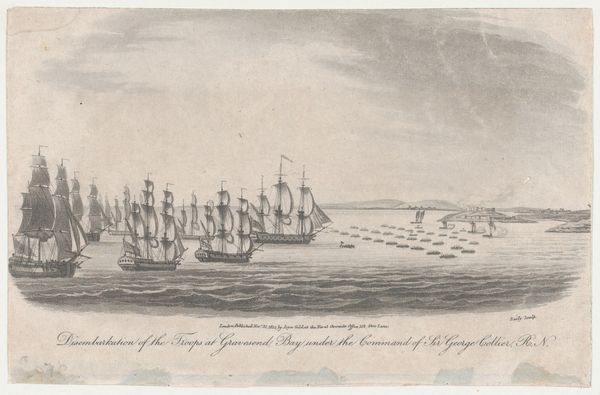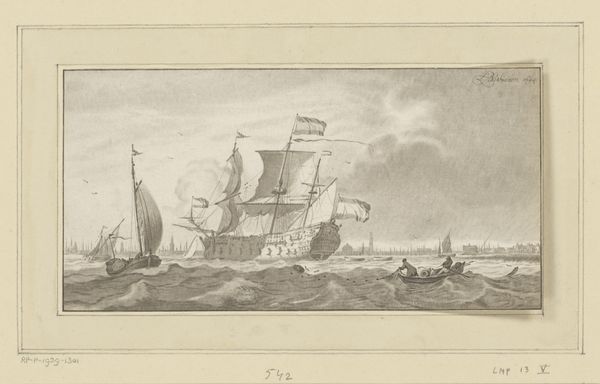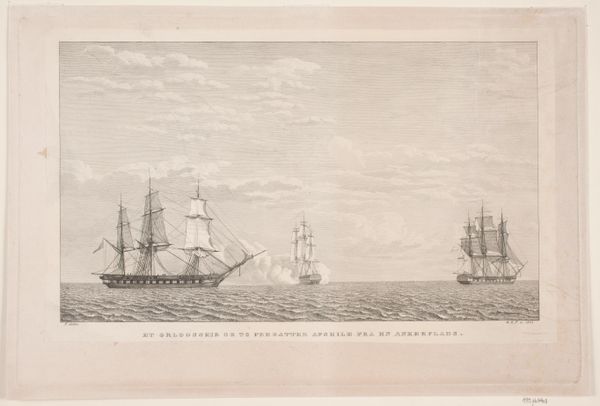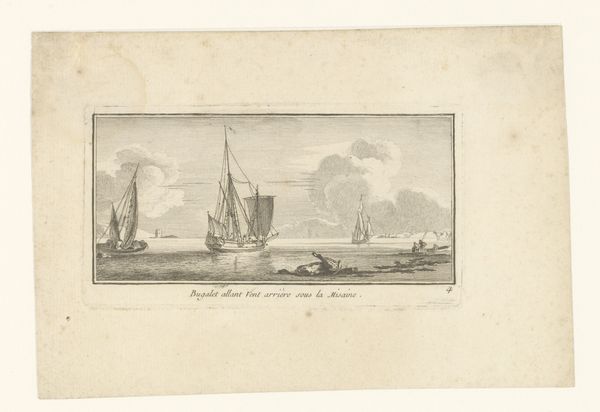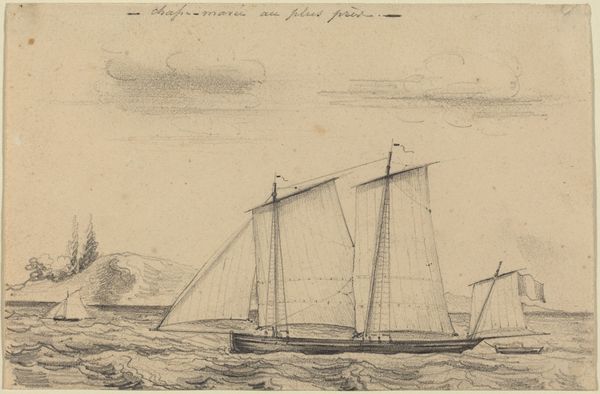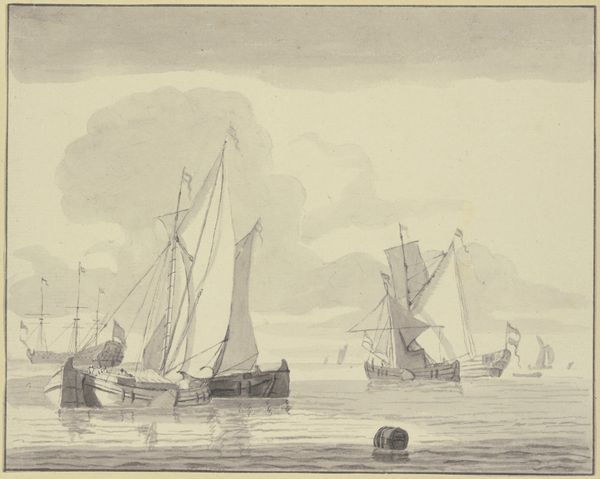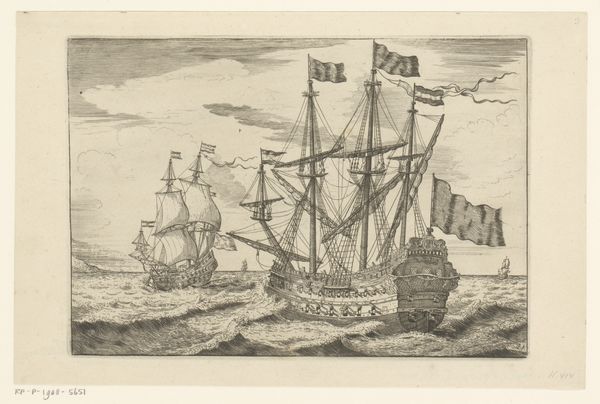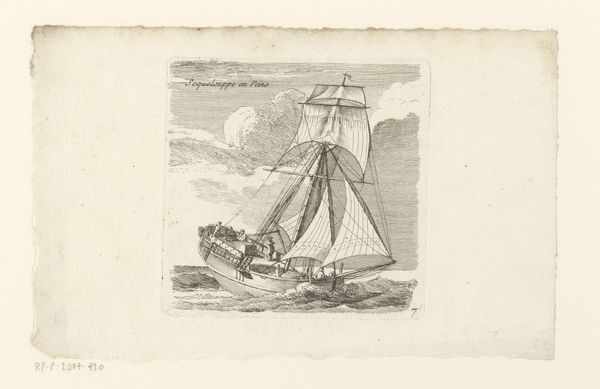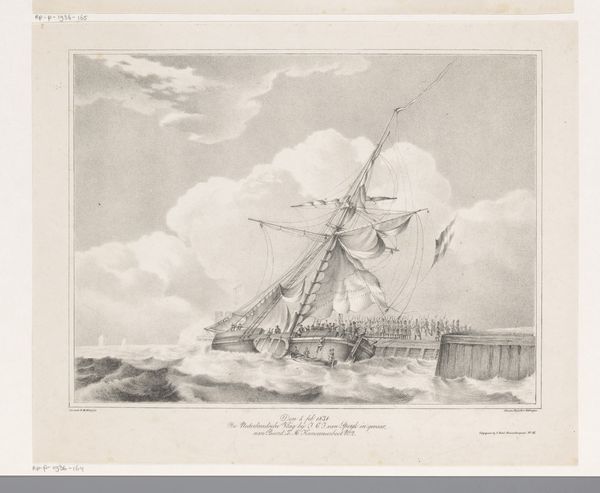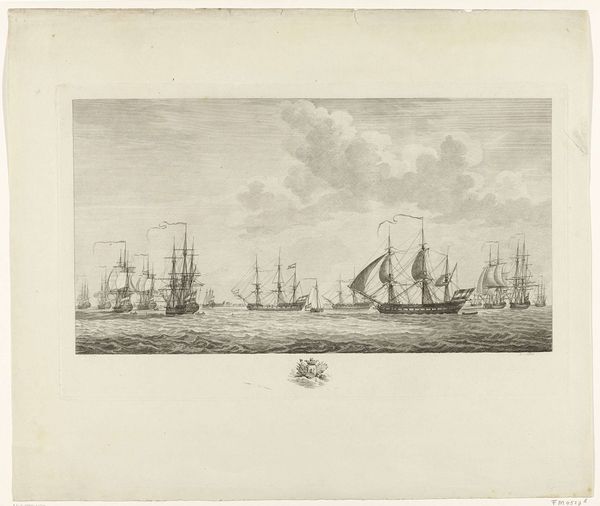
Kampen mellem 6 danske kanonbåde og det engelske linieskib Dictator, 26. juni 1808 19th century
0:00
0:00
aquatint, print, engraving
#
aquatint
# print
#
landscape
#
history-painting
#
engraving
Dimensions: 335 mm (height) x 454 mm (width) (plademaal)
Curator: My first impression is a stark, silent battle at sea. It's unsettlingly beautiful, like watching history unfold from a safe distance, rendered in tones of quiet gray. What's your take? Editor: We’re looking at a 19th-century aquatint and engraving titled "Kampen mellem 6 danske kanonbåde og det engelske linieskib Dictator, 26. juni 1808," which translates to "The battle between 6 Danish gunboats and the English ship of the line Dictator, June 26, 1808." It commemorates a specific historical event, doesn't it? The naval battle of Zealand Point. Curator: Ah, history crashing onto the canvas, or in this case, the printing plate! The perspective pulls me right in. It’s a vast ocean meeting a clouded sky and rendered so delicately despite portraying something so violent. Does that resonate with you? Editor: Absolutely. The print shows the unequal power dynamic of naval warfare, highlighting the bravery of the Danish gunboats against the mighty British warship, the Dictator. These battles often played out as contests for geopolitical and economic control, and the prints served as nationalist propaganda. The size of the British ship of the line compared to the Danish boats highlights their disadvantage. Curator: That’s powerful—seeing art as propaganda, whispering narratives about who we are and how we fight. I’m drawn to the little details – the smoke puffs, the tilt of the smaller ships, it's as if time pauses mid-struggle to ask, "What are we really doing here?". Editor: It prompts us to think about Denmark's maritime history during the Napoleonic Wars. Denmark was caught between larger powers, and events like these were crucial in shaping national identity. We could spend an age situating that identity within a complex matrix of global empire, naval dominance, and economic coercion. Curator: So, more than just a pretty seascape then, which it really is at first glance, or at least a pretty, stark seascape, it’s a window into national myth-making on water. Food for thought in a gallery full of quieter things. Editor: Indeed. Art enables dialogues with historical forces and continuing conversations around national narrative and resistance to this day. Thank you for guiding us through that experience.
Comments
No comments
Be the first to comment and join the conversation on the ultimate creative platform.
